#if the 15th century is ‘ancient’ enough
Text

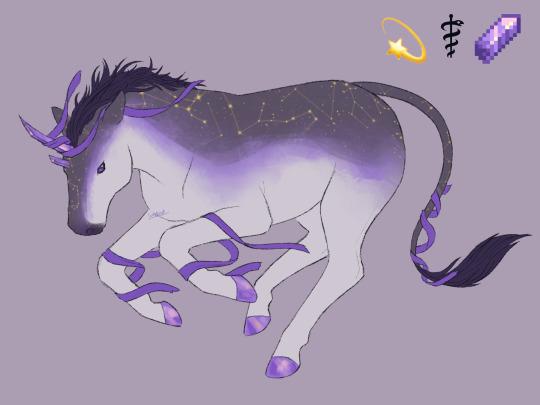
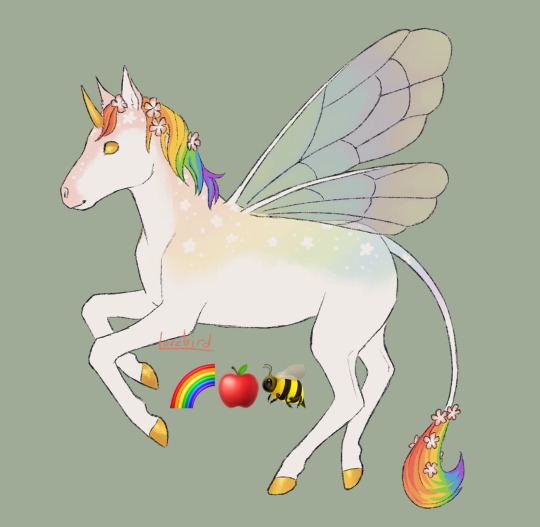
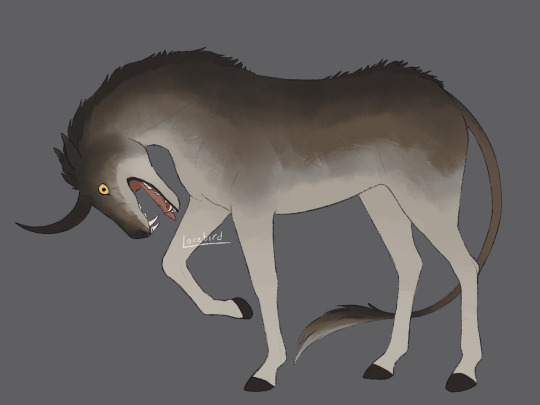
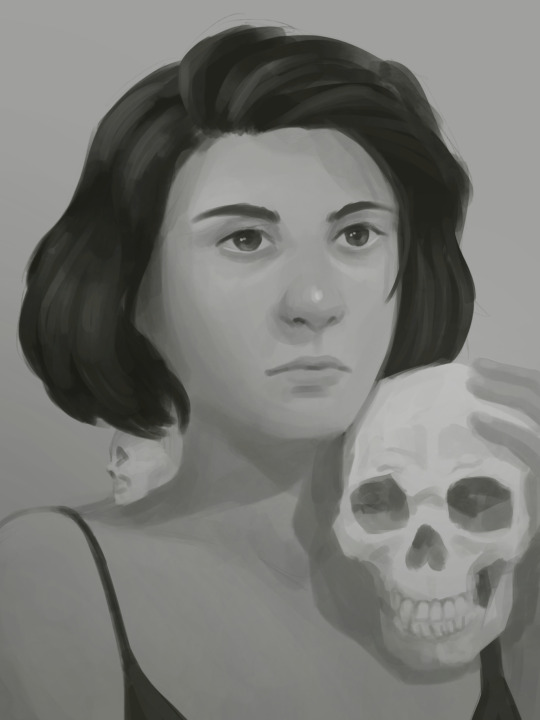

Here’s some random art from the last few months!! Some unicorns I drew based on emojis my friends sent me, plus 2 artworks from school (a short life drawing and my final for art history, referenced from this photo)
#my art#unicorn#unicorn design#life drawing#study#the model had skull earrings it was great#also my final was a spoof on ancient aliens theory <3 bitches will be like ‘aliens helped the ancient aztecs’#well the Florence cathedral’s construction was contemporaneous with the Aztec empire (and lasted for only 50 fewer years)#so why not throw aliens over there huh#if the 15th century is ‘ancient’ enough
9 notes
·
View notes
Text
realities, maximalism,and the need for big book™️
some gubat banwa design thoughts vomit: since the beginning of its development i've kind of been enraptured with trying to really go for "fiction-first" storytelling because PbtA games really are peak roleplaying for me, but as i wrote and realized that a lot of "fiction first" doesn't work without a proper sort of fictional foundation that everyone agrees on. this is good: this is why there are grounding principles, genre pillars, and other such things in many PbtA games--to guide that.

broken worlds is one of my favs bc of sheer vibes
Gubat Banwa didn't have much in that sense: sure, I use wuxia and xianxia as kind of guideposts, but they're not foundational, they're not pillars of the kind of fiction Gubat Banwa wants to raise up. there wasn't a lot in the sense of genre emulation or in the sense of grounding principles because so much of Gubat Banwa is built on stuff most TTRPG players haven't heard about. hell, it's stuff squirreled away in still being researched academic and anthropological circles, and thanks to the violence of colonialism, even fellow filipinos and seasians don't know about them
this is what brought me back to my ancient hyperfixations, the worlds of Exalted, Glorantha, Artesia, Fading Suns... all of them have these huge tomes of books that existed to put down this vast sprawling fantasy world, right? on top of that are the D&D campaign settings, the Dark Suns and the Eberrons. they were preoccupied in putting down setting, giving ways for people to interact with the world, and making the world alive as much as possible.
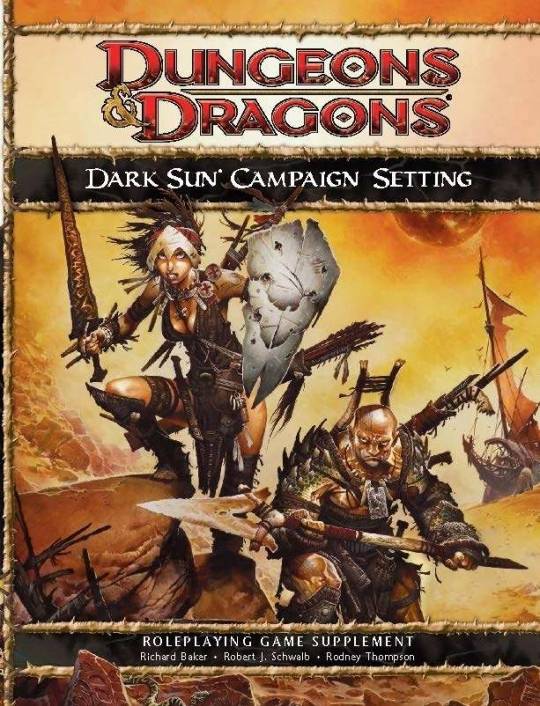



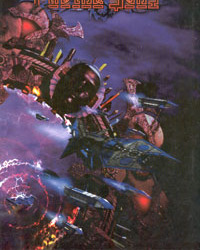
one of my main problems with gubat banwa was trying to convey this world that i've seen, glimpsed, dreamed of. this martial fantasy world of rajas and lakans, sailendras and tuns, satariyas and senapatis and panglimas and laksamanas and pandai... its a world that didn't really exist yet, and most references are steeped in either nationalism or lack of resources (slowly changing, now)

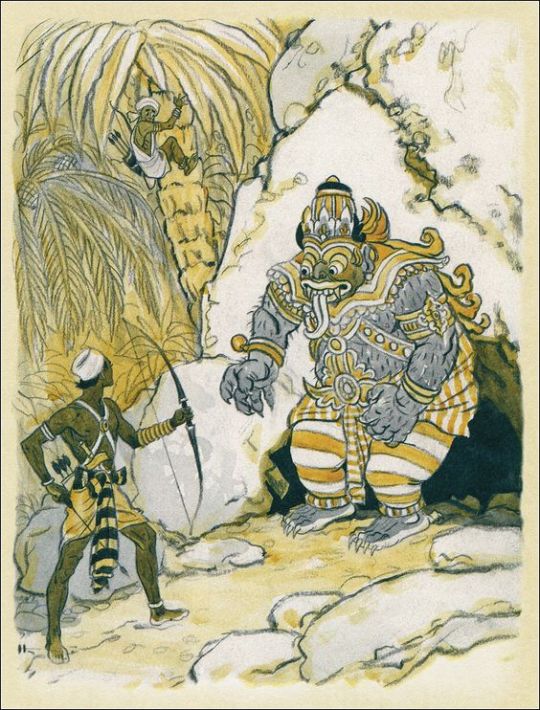
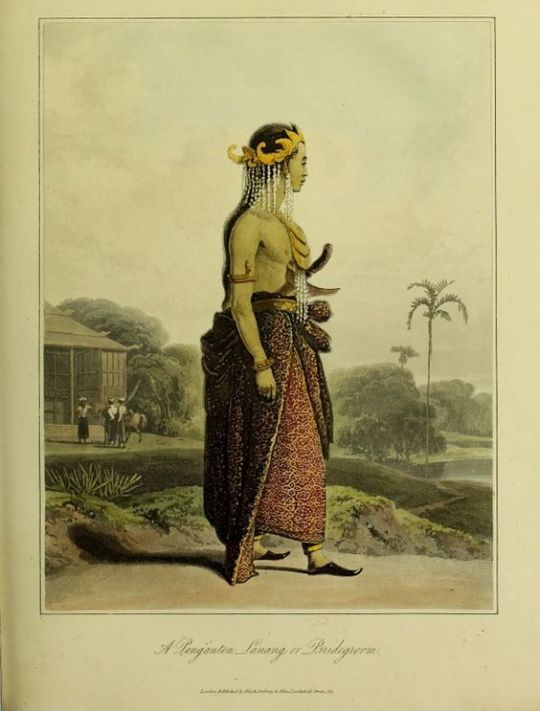
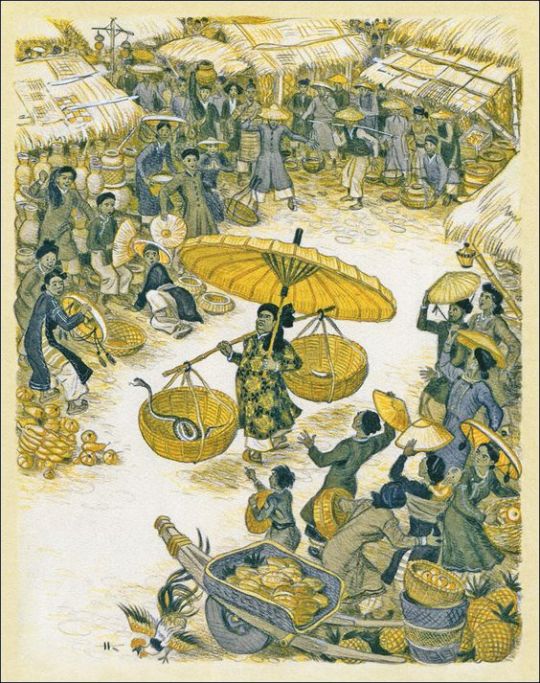
i didn't want to fall back into the whole gazeteer tourist kind of shit when it came to writing GB, but it necessitated that the primary guidelines of Gubat Banwa were set down. my approach to it was trying to instill every aspect of the text, from the systems to the fluff text to the way i wrote to the way things were phrased, with the essence of this world i'm trying to put forward. while i wrote GB mainly for me and fellow SEAsian people, economically my main market were those in the first world countries that could afford to buy the book. grokking the book was always going to be severely difficult for someone that didn't have similar cultures, or are uninterested in the complexities of human culture. thus why GB had to be a big book.
in contemporary indie ttrpg spaces (where I mostly float in, though i must admit i pay more attention to SEAsia spaces than the usual US spaces) the common opinion is that big books like Exalted 3e are old hat, or are somewhat inferior to games that can cram their text into short books. i used to be part of that camp--in capitalism, i never have enough time, after all. however, the books that do go big, that have no choice to go big, like Lancer RPG, Runequest, Mage, Exalted are usually the ones that have something really big it needs to tell you, and they might be able to perform the same amount of text-efficient bursting at the seams flavor writing but its still not enough.
thats what happened to GB, which I wanted to be, essentially, a PbtA+4e kind of experience, mechanically speaking. i very soon abandoned those titles when i delved deeper into research, incorporated actual 15th century divination tools in the mechanics, injected everything with Martial Arts flavor as we found our niche
all of this preamble to say that no matter how light i wanted to go with the game, i couldnt go too light or else people won't get it, or i might end up writing 1000 page long tome books explaining every detail of the setting so people get it right. this is why i went heavy on the vibes: its a ttrpg after all. its never gonna be finished.
i couldnt go too light because Gubat Banwa inherently exists on a different reality. think: to many 3 meals a day is the norm and the reality. you have to eat 3 meals a day to function properly. but this might just be a cultural norm of the majority culture, eventually co opted by capitalism to make it so that it can keep selling you things that are "breakfast food" or "dinner food" and whatnot. so its reality to some, while its not reality to others. of course, a lot of this reality-talk pertains mostly to social--there is often a singular shared physical reality we can usually experience*
Gubat Banwa has a different fabric of reality. it inherently has a different flow of things. water doesn't go down because of gravity, but because of the gods that make it move, for example. bad things happen to you because you weren't pious or you didn't do your rituals enough and now your whole community has to suffer. atoms aren't a thing in gb, thermodynamics isn't a real thing. the Laws of Gubat Banwa aren't these physical empirical things but these karmic consequent things
much of the fiction-first movement has a sort of "follow your common sense" mood to it. common sense (something also debatable among philosophers but i dont want to get into that) is mostly however tied to our physical and social realities. but GB is a fantasy world that inherently doesn't center those realities, it centers realities found in myth epics and folk tales and the margins of colonized "civilization", where lightnings can be summoned by oils and you will always get lost in the woods because you don't belong there.
so Gubat Banwa does almost triple duty: it must establish the world, it must establish the intended fiction that arises from that world, and then it must grant ways to enforce that fiction to retain immersion--these three are important to GB's game design because I believe that that game--if it is to not be a settler tourist bonanza--must force the player to contend with it and play with it within its own terms and its own rules. for SEAsians, there's not a lot of friction: we lived these terms and rules forever. don't whistle at night on a thursday, don't eat meat on Good Friday, clap your hands thrice after lighting an incense stick, don't make loud noise in the forests. we're born into that [social] reality
this is why fantasy is so important to me, it allows us to imagine a different reality. the reality (most of us) know right now (i say most of us because the reality in the provinces, the mountains, they're kinda different) is inherently informed by capitalist structures. many people that are angry at capitalist structures cannot fathom a world outside capitalist structures, there are even some leftists and communists that approach leftism and revolution through capitalism, which is inherently destructive (its what leads to reactionaries and liberalism after all). fantasy requires that you imagine something outside of right now. in essence read Ursula K Le Guin
i tweeted out recently that you could pretty easily play 15-16th century Luzon or Visayas with an OSR mechanic setting and William Henry Scott's BARANGAY: SIXTEENTH CENTURY PHILIPPINE CULTURE AND SOCIETY, and I think that's purely because barebones OSR mechanics stuff fits well with the raiding and adventuring that many did in 15-16th century Luzon/Visayas, but a lot of the mechanics wont be comign from OSR, but from Barangay, where you learn about the complicated marriage customs, the debt mechanics, the social classes and stratum...
so thats why GB needs to be a (relatively) big book, and why I can contend that some books need to be big as well--even if their mechanics are relatively easy and dont need more than that, the book, the game, might be trying to relay something even more, might be trying to convey something even more than that. artesia, for example, has its advancements inherently tied to its Tarot Cards, enforcing that the Arcana guides your destiny. runquest has its runes magic, mythras (which is kinda generic) has pretty specific kinds of magic systems that immediately inform the setting. this is why everything is informed by something (this is a common Buddhist principle, dependent arising). even the most generic D&D OSR game will have the trappings of the culture and norms of the one that wrote and worked on it. its written from their reality which might not necessarily be the one others experience. that's what lived experience is, after all
*live in the provinces for a while and you'll doubt this too!
350 notes
·
View notes
Text

_elejah au
Love is in the Air
_tvd fanfic_Part 1
a/n: this is a light-hearted, romantic little story.
*
New Orleans
"I am all packed" Elijah said to his sister Rebekah on the phone.
"Why Rome?" the blonde asked.

"I just had this idea for my next book. And I need to go there to get the feel of the city, do some research at the archives." Elijah said.
"So, it's going to be another murder mystery with historical background?!" Rebekah stated.
"Burning Wings was such a great success and now they want me to write a sequel," Elijah said, "and a couple of nights ago I had a dream that kind of set this idea in my head to put the plot in Rome."
"Well, I hope it will not all be work- after your divorce you have done nothing but work."
"I plan to take time off and enjoy the city. Stefan is gone with Valerie to visit his brother and his wife Rosalie in Amesterdam and I got his apartment for a whole month." Elijah explained.
Rebekah sighed a little as her brother mentioned her ex-boyfriend Stefan Salvatore.
"I am sorry, I shouldn't have mentioned him."
"It's ok. I just- it will always be hard cuz- you know - I messed ut up and now- ok- right. When is your flight?" Rebekah asked.
"Tomorrow morning. I will call you when I get there." Elijah replied.
"All right. Have a great time. And try not to just work." Rebekah said and with a little bye and Elijah's promise that he will also take time to enjoy his holiday, they hung up.
Pressing the search button, the latest articles with the news popped up. And the picture of the woman he had met ten years ago as he visited his sister, who was studying in the prestige old private Mystic Falls College for liberal arts, now stared at him.
His eyes smiled seeing the photo, which was clearly from one of her premieres as she was a famous actress.
And then he saw the article headline.
Elena Gilbert rumored to be secretly engaged to Mason Wood.
Elijah sighed a little and not reading further, swiped the page off and went to a subject he was interested in.
*
In Florence, Italy
Elena walked in her hotel room followed by her personal assistant and manager, Jo Parker.
"Thank God today was the last day of the shoot. Can you please reschedule everything for at least a week?!" Elena said."I am so going away and I don't want to know about anything. Please."
"All right. So, what shall I book you? Bali?"
"No. I already made my own arrangements." Elena said.
"What? I didn't want to ask - but - are you seeing Mason again?" Jo asked.
"No. Well, we hooked up again- and that's all" Elena replied waving away with an insignificant huff.
"Right. Do you want me to say something about the non-engagement? It's all over the internet"
"No. Just leave it. It will blow over. Especially when they soon see him with Erin." Elena explained.
"Erin Lindsay? Seriously?" Jo now asked.
"A couple of days after our hook up I saw him with her all lovey at the same hotel." Elena said followed by a little sigh.
"Oh, sweety - you still thought that -"
"Yeah- I kind of thought that maybe the hook up would be - but things were over with us ages ago- I don't know why I thought that there - and I am not even in love with him really - anyway, enough of it."
"Where are you going?" the manager asked.
"Rome." Elena replied.
"Rome?" Jo was surprised.
"Yes. And I am going incognito. I got Francesca's keys to her apartment. I need to get away from everything and everyone. Take a week off- maybe two." Elena replied.
"Ok. I have something for you to read. Liv is still negotiating to get the rights to do a movie, but it's nearly in the bag and Tristan is very interested in producing this," Jo now got a book out of her bag, adding,"it's a historical thriller and you would be playing Angel, she is a 15th century librarian, who investigates a murder involving an ancient curse. The book was No.1 everywhere!"

Elena took the book and looked at it, muttering,"Elijah Smith?" and then turned the book around. The face on the back now made her heart jump.

"Interested? The book is really good - there are so many twists and turns - I could not put it down till I finished it. There is a very ambiguous cliffhanger at the end - and apparently there is going to be Burning Wings 2- Elena?"
"Ha? What?" Elena now snapped out of her momentary daze.
"Interested?"
"Yeah" Elena said breathing in a gulp.
Jo smiled a little, gathering why Elena got a tad bit taken in.
"He is such an eye-candy, right?"
"Yeah" Elena said and put the book down on the table.
"What's up?"
"Nothing," Elena replied, "ahm- I want to go shower and I think I will hit the bed."
"All right. I will see you at breakfast? Shall I rent- a- car for you?"
"Yes, please. Thanks, Jo. Sorry, I am just so wasted."- Elena now said rubbing her neck a bit.
"I know. Don't worry. Ok. See you in the morning." Jo said and then taking her bag from the chair left the actress's room.
As the door clicked on the way out, Elena now shot a look at the book, flashing back to the past.
Flashback
Ten years back
"May I?" Elijah asked politely for the seat on the bench.
"Yes" Elena said removing the books so the man could sit down.
"Maybe it appears odd that I want to sit here though the other bench over there is empty, but it's too exposed on the sun and it's such a great shade here under this oak" Elijah said as he sat down.
"Yeah- it's crazy hot today," Elena replied,"and it's only May"
Elijah's eyes now descended on one of the books - "Roman Tragedy", and then a guide book on Rome. "Ah, Rome - such a great city."
Elena now swayed her look from her book she was reading.
"Have you been there?"
"Yes, last summer. With my sister Rebekah and my brother Kol." Elijah replied.
"Rebekah is your sister?"
"Yes. I am here to meet her. And she specificly said - to be at the White Oak Tree. She is running late. You know her?" Elijah explained.
"We are in the play together." Elena replied.
"Oh, really? She didn't say anything about it. Is she any good?"
Elena nodded a little.
"Not that great, ha?"
"She is, and she could be excellent, but she seems not to care that much. Ok, I shouldn't saybanything really."
"Oh, you're ok. She is my sister and I love her, but I know what she is like. She excels only at things she really is passionate about, and if she is not - well, she can be superficial."
"Yeah" Elena slipped.
"She wants to be a designer, she told me and I saw some of her designs - and they are amazing. Her show is the evening. But I guess, you know that?!" Elena said.
"Yes, that's why I am here." Elijah now said.
He then saw Rebekah approaching and he stood up. And just before he went to his sister, he turned to the brunette, introducing himself, "I'm Elijah."
"I'm Elena." the woman said.
_to be continued
#elejah#elena gilbert#elijah mikaelson#alternative universe#tvd au#elena and elijah#tvd imagines#fanfiction#part 1#love is in the air#book cover designed by me#aka elijah smith
30 notes
·
View notes
Text




The Norimitsu Odachi (15th century) is a huge sword from Japan. It is so large that according to legend it was said to have been wielded by a giant. Measures in at 3.77 meters and 14.5kg.
Sword Lore
Admittedly, the reason why my friends are into swordsmanship is because of the sword itself. They just want to handle swords, that's all. They don't care about winning competitions or fights; for them, the swords in their hand brings an inexplicable pleasure. There is a sort of romance surrounding these weapons that others don't have. Most, that is. I say this because I've heard that polearms also have their place in other cultures and that the dagger has become symbolic in modern militaries.
It's a matter of preferences, and the cultures that preferred the sword have a collection of stories and legends attached to the weapon. What the samurai, medieval knights, and other warrior societies have in common is their blade lore. The sword is an important piece in their arsenal even though there are more superior tools in their inventory (like polearms ad firearms).
And going back to the samurai, some of the legends surrounding their weapons persist up to this day. Their blade lore is kept alive by the constant stream of films and anime to the point where everything is exaggerated. And one sword in Japan seems to take the word exaggeration to new lengths. Kept in a shrine somewhere in Okayama is a monstrous Japanese sword that stirred the imaginations of first-time observers.
Some Japanese swords required two hands to wield, but the sword of the Yahiko jinja shrine would require superhuman strength. The sword has a name, Norimitsu Odachi, named after its maker Norimitsu Osafune. The weapon dates back to the Muromachi period and was forged in August 1446 in the province of Bishū. And at a length of 3.77 meters, it will dwarf any sword in its class, even some western swords.
Not only that it is huge, but it is also heavy. Forged from a single piece of steel, the weapon weighs 14.5 kilos, far heavier than modern rifles, and obviously quite a lot for even trained warriors. The fact that it dwarfed average humans tickled the imaginations of people who admired its monumental scale.
Obviously, even highly trained samurai won’t carry such a monster on the battlefield. They would develop shoulder pain before they could even chop down their enemies. And any object weighing more than 10 kilos will tire the poor wielder. Because of this, people began to wonder why such a large odachi was forged and who would use such a contraption.
A large weapon requires great strength. And great strength correlates to great size. And only creatures with great size and strength could swing such a weapon. Hence the Norimitsu Odachi was intended for giants, at least as some people say.
The presence of a large weapon is evidence enough for some to believe in a race of gigantic beings. Japanese mythology often features gigantic creatures, like the local version of the western ogre Oni. Could it be that such legends were inspired by real life? Perhaps people of Japan back in the olden times really were aware of the existence of gigantic beings, and the giant sword was intended for their use.
But, there was a problem with this theory.
Firstly, the notion that the Norimitsu Odachi once belonged to a giant was recent and not an ancient legend. We could say that the restless users of the internet gave birth to such an idea. And the truth behind the massive, bladed weapon is quite underwhelming.
The Norimitsu Odachi belongs to a class of Japanese swords known as the odachi (obviously). Most westerners often associate the samurai with the katana, but throughout history, the samurai wielded several sword variants. Preceding the katana is a type of sword known as a tachi, whereas a blade longer than the tachi—the odachi—was widely used back in the Nanboku-cho period.
In Japan, ō (大) means great, while dachi is another variation of the word tachi, meaning sword. Hence, we have the odachi, the great sword. Indeed, the sword could reach 70 inches, as in the case of Uesugi Kenshin's men, while the Rikishizei troops of the Asakura clan carried 60-inch odachi.
One might wonder what the idea behind the extra-long swords was. According to some historical texts, the odachi was the weapon of foot soldiers and was more of a battlefield weapon. The great length of the sword gave the soldiers the reach advantage of a polearm, so the sword could be used as an anti-cavalry weapon as well. The preferred technique was the downward cut.
The odachi was also used to show off an army's strength, both as a morale booster for the user and as a form of intimidation. But carrying such a large weapon presented unique challenges. Unlike the tachi or the katana, the odachi was either hand-carried or slung across the back. In most cases, a retainer was needed for the samurai to draw such a sword quickly.
Nevertheless, the tactics shifted to spear-wielding troops and firearms. Plus, a large, heavy sword proved disadvantageous in situations that favored speed or mountain battles. Eventually, the odachi fell out of favor, but an impressive blade makes for a good temple offering. Hence in the Edo period, the odachi took on a ceremonial role in the temple. And since the odachi was not an easy sword to make, the manufacture of such a weapon was a statement of the maker's skills.
The maker Norimitsu Osafune simply wanted to make a statement. He wanted to show off how good he was by crafting such an object. Forging a Japanese sword was no easy feat and took years to master. And forging an even bigger sword was harder.
For one thing, a normal-sized sword already required complex forging techniques, and an extra blade length meant added complications. Simply, more work and hammering for the blacksmith. The longer metal was also harder to heat into homogenous temperature.
Then, there was the quenching. In a normal-sized sword, one will dip the blazing blade into a pool of water. An odachi needed a larger quenching medium, and who knows what size Norimitsu Osafune used for his monster sword?
Lastly is the sharpening and polishing. Obviously, one can’t apply the normal polishing method (rubbing the blade over a stone) to such an object. An odachi was hung or placed in a fixed position during polishing as the artisan did their work.
And it seems the physical labor paid off, as Norimitsu Osafune gained lasting recognition for his sword. And whoever commissioned the work must be really wealthy, for forging such a large object was expensive.
References
1. Kazuhiko Inada (2020), Encyclopedia of the Japanese Swords
2. Mol, Serge (2003). Classical Weaponry of Japan: Special Weapons and Tactics of the Martial Arts. Kodansha International.
3.Norimitsu Odachi: The Mysterious Giant Sword of Okayama (08 February 2020) Retrieved from Norimitsu Odachi: The Mysterious Giant Sword of Okayama - Nspirement.
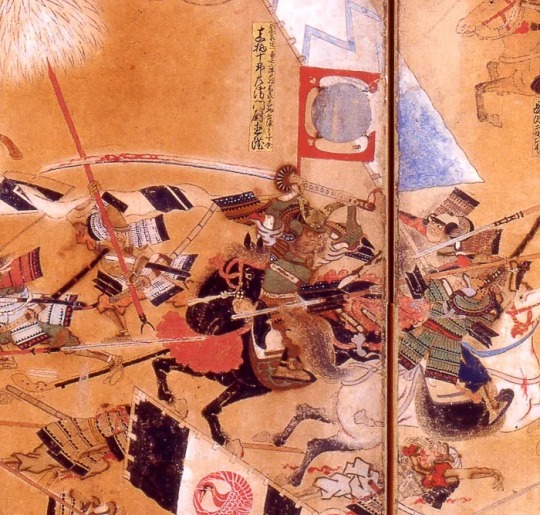
35 notes
·
View notes
Text
We don't know wether Pokémon Legends Z-A will be set in the ancient past or recent past, but regardless, I would like some more context for these things specifically (I am a sucker for lore):

These are specific details I remember from when I played X, so it's an assortment of notes I remember/checked in with Wikidex and Bulbapedia.
From here on I will theorize a whole bunch and expand on these topics so, um. History and imaginings ahead. All the information is from Wikipedia.
Firstly, we can safely assume that Lumiose City (the city that is the focus of the trailer) is heavily inspired by Paris, France. The city of Paris is really fucking old: according to Wikipedia, the Parisii (a Gallic tribe) settled around the river Seine between 250 and 225 BC, and the Romans colonized them in 52 BC. All of this to say it's OLD. But I doubt Pokémon Legends Z-A will thrust us into old Roman times, for one specific reason: the Eiffel Tower, or its Pokémon equivalent, Prism Tower.
The Eiffel Tower was built for the 1889 World's Fair, so it's fairly modern. If we were to take into account this, we can deduce the setting for Pokémon Legends Z-A could be set around late 19th century France. This is NOT "3,000 years old war AZ and Floette stuff."
If you wanted to have a game centered around that event, you would have to set the game's history period even before the Parisii. It could be that Lumiose City was built after the 3,000 years old war, and they're electing to stretch the time periods and architecture to fit it, but I sincerely doubt it. Prism Tower looks too futuristic for that.
My bet, then, is in late 19th century. The World's Fair concept could work here, and instead of building the one tower they could build the entire city.
Enough Paris talk, let's move to Versailles, or its Pokémon equivalent, the Parfum Palace.
The Palace of Versailles was turned into the official seat of the monarchy in 1682. This would mean that, if we were to follow my theory, Parfum Palace could be older than Lumiose City. There's also a mention of a war "300" years ago. This could be a reference to the French Revolution of 1789-1799. Was there a similar war in Kalos? Was AZ, who is said to resemble a king's portrait in the Palace, have been involved? It could also explain why Parfum Palace is a museum in present-day Kalos, after the monarchs were driven out. This could mean that Pokémon Legends Z-A could be set a century after the Kalos Revolution.
Now, onto pure speculation: I would set Victory Road and the Pokémon League to have been built during the Medieval Ages. The simple architectural style of the ruins reminds me of very simple fortresses and castles, and the Romanesque architectural style (10th-13th century European style) or maybe older than that, pre-romanesque? The Franks and Carolingian architecture? As for the Pokémon League architecure, I would situate it as a Gothic Cathedral. The Gothic style of architecture evolved from the Romanesque (which means late 12th-16th century), and they're known for their high towers, intricate detail, and big-ass coloured glass windows. Also, the armed woman statues inside the League could be a reference to Joan of Arc, who lived in the 15th century. Was the Pokémon League constructed to honour a similar historical figure, a heroine from the Pokémon wars?
And as for Shabboneau Castle and the sun clock from Anistar City, for the former it's just a countryside castle/manor (I wouldn't say it's 100% medieval, but that's just me), of which there are a lot in Europe, and for the latter I have no fucking idea. What the fuck is that.
#pokémon#pokemon#pokemon legends za#theory#pokemon theory#long post#magpie talks#i love overthinking stuff#and art
9 notes
·
View notes
Note
Desmond is sent back in time after the flare, but is turned into a griffin. How does this change history with his ancestor's?
Okay, so the main problem is a griffin would have the stealth stat of a steam train in Ancient Greece. If they even try to hide the eagle head, people would look because “Why is that dog all wrapped up OH MY GOD IT HAS CHICKEN LEGS!” “Fuck you, man, they’re eagle legs!”
But I like the idea of Altaïr finding Desmond as a baby griffin just a few days after his tragic fallout with Abbas. Desmond would be little enough that Altaïr could smuggle him inside Masyaf and maybe he’ll take him to the very depths of Masyaf where, later in life, his library would have been constructed. From there, Altaïr would keep visiting him and giving him food while Desmond would be trying to get used to his new body and slowly growing up. Al Mualim wouldn’t know about it because he would be too busy with his mentor duties (and, later on, too busy with the whole ‘being a Templar but planning to betray them anyway’ thing he had going for him). The one who would actually find out about Desmond would be Kadar because he has the best Altaïr radar in Masyaf (much to his brother’s annoyance) so he would be able to find Altaïr with Desmond. From there, Kadar will be his fellow secret-keeper and they’ll get close. Malik gets roped in because he’s had enough of Kadar being sneaky and followed him. His reaction was “Oh, thank Allah. They’re not having a secret affair. They’re just hiding a dangerous mythical creature underneath the fortress. That is a BETTER alternative.” From there, AC1’s plot will stay the same-ish with the addition of Kadar living because his closeness with Altaïr and all the sneaking they keep doing makes him less ‘hero-worship’ type and more of ‘I like you, Altaïr, but that’s dumb’ type towards Altaïr. Desmond would probably have his big hero moment by suddenly rushing out of his hiding place and flying around Masyaf once Malik and the Assassins he brought with him joins Altaïr in taking down Al Mualim. During that time, he’ll divebomb Al Mualim and pretty much crack the old man’s back so he would let go of the Apple. And that’s how the Levantine Brotherhood would find out there’s a freaking griffin living underneath Masyaf.
By the 15th century, the griffin would be considered a legend in the veins of “Some say the great Altaïr had a griffin by his side” or “It’s not an actual griffin. The griffin is a symbol of how Altaïr had the knowledge and drive to evolve the Brotherhood”. And then there’s the whole “The griffin is the name given to Altaïr’s Apple of Eden”. It’s the whole ‘the truth is distorted by time’ inevitability in play.
For Ezio, I have a very sad idea that I like: Ezio finds Desmond sleeping in Altaïr’s library. The entire plotline of Ezio’s Trilogy stays the same although Altaïr’s statue in Villa Auditore would be larger to accommodate the large griffin curled around his legs while the memory seals does include an actual griffin which made Ezio go “………… Yeah, okay. Why not? I already met a goddess anyway.” So, in this idea, Desmond stayed with Altaïr to the very end. Even when Altaïr tells him to go with Darim, he refuses and lies down on the ground next to Altaïr’s legs. Altaïr dies in the library after patting Desmond's head and saying “Thank you, my dear friend” to Desmond and Desmond just… sleeps. Maybe he expected to die in the library as well. Maybe he just wants to stay with Altaïr. Maybe… he just had enough of being powerless to change anything. He’s a griffin, sure, but everyone in Masyaf knows of him and they managed to chain him to stop him from saving Sef and Malik. In the end, Desmodn couldn’t save anyone. All he was able to do was help Altaïr and Darim escape after Darim found him and unlocked the chains. He shared Altaïr’s grief and, in the end, he was just as tired as Altaïr was.
When he next opened his eyes, he sees Ezio kneeling next to Altaïr’s skeletons and he let out a sorrowful sound. Ezio patted his head and said softly, “You’ve been here all this time, haven’t you? I’m terribly sorry for your loss. If you’d like… would you like to come with me?”
And Desmond says his final farewell to Altaïr and joins Ezio in his peaceful life back in Italy. Time still took Ezio away from him but, this time, he’s cared for and loved by Ezio’s wife and children. He stays more as a pet and a companion and he becomes a family secret of the Auditores.
In this scenario, I think that Desmond would leave the Auditore bloodline maybe a century or so after Ezio’s death. From there, he travels to the forest near Ratonhnhaké:ton’s village, waiting for him to be born. He regrets not spending enough time with Ezio so, this time, he plans to be there for Ratonhnhaké:ton. Perhaps a part of him wished he could find a way to help Haytham but the Haytham of his memories, of Ratonhnhaké:ton’s memories, was dedicated into the Templar cause too much for Desmond’s liking so Desmond gives up on Haytham and focuses on preparing for Ratonhnhaké:ton.
In those intervening years, Desmond becomes known as the forest spirit and his fondness for Kaniehtí:io is noted as a sign that Kaniehtí:io would do great things.
Desmond doesn’t intervene for a while to make sure Kaniehtí:io and Haytham meets and he waits until they had sex (which was awkward for Desmond) before he approached Haytham. Haytham is too surprised by his appearance that Desmond is able to nick the key from him and then leaves without saying anything. Kaniehtí:io believes that Haytham was meant to give the key to Desmond. Haytham believes that Desmond may be the ‘key’ that is needed to find what he wants.
And that is how Desmond accidentally got Haytham to keep showing up in the forest and in the village, making him realize that Kaniehtí:io is pregnant with his child.
Desmond watches as Haytham grows closer to his family and they even got married but Ratonhnhaké:ton still grows up in the village because his mother refuses to leave the tribe. Because of this, Haytham and the Templars ally themselves with the tribes and Desmond has no idea if that’s a good thing or not.
Ratonhnhaké:ton grows up knowing Haytham and being cared for by Desmond.
……… that’s as far as I got. This would probably have Haytham leading the Templars to not being such dicks during the Revolutions but, in this scenario, Desmond fucked up so badly that the tribes would actually join forces with the British and Ratonhnhaké:ton would become a Templar… with Shay Cormac as his main instructor.
#okay ngl this got away from me#i was writing the kenway drama and holy shit#i didn’t expect it to go down that route#i guess#good templars#no assassins?#it would be funny if this ends up going down the tyranny of king washington route instead#because of how the tribes and the british are kicking their asses#washington had no choice but to use the apple#assassin's creed#desmond miles#altaïr ibn la'ahad#ezio auditore#connor kenway#ratonhnhaké:ton#haytham kenway#sorry edward#ask and answer#teecup writes/has a plot#fic idea: assassin's creed
94 notes
·
View notes
Text

“If cannabis were discovered in the Amazon rainforest today, people would be clambering to make as much use as they could of all of the potential benefits of the plant. Unfortunately, it carries with it a long history of being a persecuted plant.” ~ Dr. Donald Abrams, Chief of Hematology Oncology at San Francisco General Hospital
Approximately 106,000 Americans die yearly from prescribed medications, according to the American Medical Association. Even more frightening, preventable medical errors account for a staggering 400,000 deaths in the U.S. each year — and is considered the 3rd leading cause of death. “It’s equivalent to 2,000 commercial jets taking off each year knowing that they don’t have enough fuel to complete their journeys,” notes Peter Edelstein M.D. “Would you allow your spouse to board one of those planes? Your friend? A stranger?”
Good question. Increasingly, people in the West are seeking out treatments that work harmoniously with the body, instead of against it — in other words, they’re walking away from the medical establishment and all its mishaps, mistakes and pharmaceutical drugs. A case in point is cannabis, especially in its raw form.
A Rich History
Marijuana is one of those plants that, to many, conjures visions of Drug Enforcement Administration (DEA) raids and hippies in a drugged-out daze. But it wasn’t always this way.
“The ancient Chinese knew of marijuana’s pain-relieving and mind-altering effects, yet it was not widely employed for its psychoactive properties; instead it was cultivated as hemp for the manufacture of rope and fabric. Likewise, the ancient Greeks and Romans used hemp to make rope and sails. In some other places, however, marijuana’s intoxicating properties became important. In India, for example, the plant was incorporated into religious rituals. During the Middle Ages, its use was common in Arab lands; in 15th-century Iraq it was used to treat epilepsy; in Egypt it was primarily consumed as an inebriant. After Napoleon’s occupation of Egypt, Europeans began using the drug as an intoxicant. During the slave trade, it was transported from Africa to Mexico, the Caribbean and South America. Marijuana gained a following in the U.S. only relatively recently. During the second half of the 19th century and the beginning of the 20th, cannabis was freely available without a prescription for a wide range of ailments, including migraine and ulcers,” Roger A. Nicoll and Bradley N. Alger remind us in Scientific American.
Even American Founding Father Thomas Jefferson declared: “Hemp is of first necessity to the wealth and protection of the country.”
So what happened?
In 1937, the United States Congress decided — against the recommendation of the American Medical Association — to pass the Marijuana Tax Act. The legislation essentially banned the use of marijuana by making it excessively expensive and difficult to secure. It has been downhill ever since. That is, until the last few years where legalization of marijuana has exploded in the U.S., for both recreational and medicinal uses. For our purposes here, we’re going to look at the health benefits of the plant — which are quite impressive.
An Essential Vegetable
“It [cannabis] has captured these molecules that help our bodies regulatory system be more effective. The bottom line is it’s a dietary essential that helps all 210 cell types function more effectively. I don’t even refer to it as medicine anymore, strictly as a dietary essential.”
~ Dr. William L. Courtney
It may be a stretch for some to recognize rawcannabis as the next in-demand superfood, but Dr. Courtney, a physician with extensive medical training who specializes in the dietary uses of cannabis, presents a provocative case.
When you heat or age cannabis, Dr. Courtney believes that you lose 99% of the benefit cannabis provides. In contrast, if you consume it raw, you’ll reap the full value of the plant. Plus, raw cannabis is non-psychoactive, so you won’t experience a high — an important point for those who would like to utilize the healing aspects of cannabis without feeling drugged or off-center. This means you can also consume a much higher amount of health-promoting compounds with raw cannabis juice compared to if it was smoked or extracted as an oil, according to Dr. Courtney.
Terpenes, essential oils found in cannabis which give the plant its unique aroma, are particularly compelling.A study published in the British Journal of Pharmacology states that terpenoids are “pharmacologically versatile: they are lipophilic, interact with cell membranes, neuronal and muscle ion channels, neurotransmitter receptors, G-protein coupled (odorant) receptors, second messenger systems and enzymes.”
The researchers explored the powerful effect terpenes exert in animal tests. Limonene was found to increase serotonin in the prefrontal cortex and dopamine in the hippocampus region of the brain — both of which help fend-offdepression and feelings of stress. Moreover, limonene induces apoptosis (cell death) of breast cancer cells and demonstrated exceptional radical scavenging properties. It’s also remarkably bioavailable, rapidly metabolized and is highly non-toxic and non-sensitizing.
Myrcene is anti-inflammatory and an effective sleep aid, while pinene acts as a bronchodilator and broad spectrum antibiotic — including the destruction of lethal MRSA bacteria. Pinene also curbs inflammation. Linalool is a sedative and anticonvulsant. Caryophyllene is antimalarial, anti-inflammatory and useful in treating duodenal ulcers. Nerolidol inhibits fungal growth and protozoal parasites. Phytol increases GABA expression, resulting in a calming effect. These are just a handful of the 200 varieties of terpenes found in cannabis.
How to Enjoy More Raw Cannabis in Your Life
For a daily dose, Dr. Courtney advises juicing fifteen cannabis leaves and two buds, which is then added to a small amount of fruit or vegetable juice that is consumed throughout the day. If you would like to learn more about juicing cannabis, this article offers tips and suggestions. Keep in mind that juicing improperly may create heat, which will cause THC to form. Jeffrey C. Raber, Ph.D. also recommends having the strain of marijuana you’re using tested at a reliable and accurate lab so you know exactly what you are getting.
Article sources:
www.psychologytoday.com
www.humboldtjustice.com
www.globalhealingcenter.com
www.cannabisinternational.org
www.ncbi.nlm.nih.gov
www.huffingtonpost.com
www.projectcbd.org
8 notes
·
View notes
Text
Kevin Day Cooks
About three years after going Pro, Kevin gets bored in a sense. Exy has been his life for so long that at 26, he wants something new. But the only other passion he has is history but even that isn’t enough to settle him. So he searches for another hobby and finds one that he’s actually good at.
At the Nest all meals were prepared and made by the team so Kevin had been cooking since age seven, casually. it was self preservation to him, nutrition only. Until Abby asked him the history behind the meal they were eating at family dinner and...he didn’t know. Kevin sat at a loss for a long few minutes because he knew so much about history, but he’s forgotten the most important part.
Food.
It brought people together and tore them apart all the same but it was the one thing that tied everything together. forget religion, and work, food was what made the world. Without it, no one would exist.
He started learning where dishes came from, and the cultural history behind them. He asked Jean about French dishes, and Jeremy about southern ones, and whenever he crossed paths with someone visibly not from the States, he asked them their favorite meal so he could learn both how to make it and the history.
Due to all this cramming, the facts started pouring out of him very quickly. Andrew, Neil, Jean, and every other player on his team got very fed up very quickly. It was Bee who suggested he share it. The blog idea was shut down, as was the guest starring on a cooking show because Abby said that he wouldn’t be able to ramble like he tended to do.
So, Youtube. He created a Youtube, watched a few hundred videos on how to edit, and other cooking videos for an idea of what he was supposed to do, and got to work. He started easy, a dish anyone could make - Garlic Bread. he chattered on about the timeline and history of the bread while mixing ingredients, kneading the dough - sleeves rolled up his forearms because Nicky said it would get views from Non-Exy watchers if he did that.
Immaculately dressed in slacks and a flannel, Kevin Day made Garlic Bread while babbling on about the history of Ancient Rome, 15th Century Italy, Bruschetta, and the new Italian-American version of the food. He edited it, posted it, and by the time he woke up the next morning it had over a million views, had been written about in dozens of articles, and was all over twitter. most especially being dragged through the mud by the Foxes for the shots of him bending over to but the bread in the oven and slight muscle flexing. Allison coined it “Borderline Fanservice”
Kevin didn’t care. He liked that people wanted to hear him talk about history while also being able to indulge in cooking for more than simply needing nutrition. As the channel grew people started recognizing him as Kevin Day the Youtube cooking man almost as much as they did Kevin Day the son of Exy.
One video turned to two to three and so on and so forth.
As it grew cameos were made.
While making brownies and blabbering about Bertha Palmer, Andrew sat cross legged on the counter just barely in frame with a cat in his lap wearing plaid pajama bottoms and what was clearly a Palmetto hoodie with JOSTEN across the shoulders - how the Josten-Minyard Rivalry was outed as the Josten-Minyard Romance. The press had a field day. The video also factures not only Andrew pelting Kevin with chocolate chips throughout the video, zeroing in on Kevins ass when he bent to put them in the oven, but the ‘keeper pouring an extra half bag of chocolate chips into the batter when Kevin wasn’t looking whilst wearing what some fans deemed a smile.
When Kevin chose the Dobson Schnitzel recipe, he invited Bee onto the channel and pretty much smiled at her the entire time she talked about the origins of the recipe. Her great-great grand mother, and her proud Jewish roots. (Whenever asked about his favorite episode, Kevin always says its that one.)
He posts a Cooking w/ Dad video in which Wymack cracks not one, not two, but five different smiles at his son while they make regular old chocolate chip cookies as they should have been doing when Kevin was eight and had a bad day instead of Kevin working through injuries on a court and Wymack grieving Kayleigh during PT while feelings for his therapist bloomed.
There’s a few dozen videos that Aaron just pops in every once in a while to watch Kevin work. In one he’s arm crossed, practically a statue off to one side. In another he’s wearing scrubs, dead on his feet, and stealing a bite off Kevin’s plate and humming in approval. He’s passing through the kitchen and swiping frosting from the piping bag, or staring diligently at the coffee machine pulling an espresso shot too slowly for his liking. In every video Aaron appears in Kevin always has this dopey look on his face until Aaron is gone in the next cut, in every video there is some type of soft physical touch, and an air of domesticity that leads the press to talk and receive absolutely no answers.
Dan and Matt pop in from time to time, passing through the kitchen during a kitchen party for the OG Foxes and their partners. There’s Allison sitting on the counter, phone in one hand, lipstick in the other, applying a new layer with Renee leaning into her, back to Allisions chest. (The fans and press have already taken notice that Renee always puts her back to a wall and find this little event to be something to look into.)
There’s always Neil. Neil in the background, Neil stealing food, Neil trying to pester Kevin about stats that lead to such a big conversation that Kevin forgets what he’s going and has to record a voice over for the rest of it - the fans pester him to post the original sound and it doubles the views of the first. Neil staring at the finished cooled apple pie, glancing at Kevin, and just bashing Kevin face into it so hard the pan cracks in half. Neil and Aaron, who was also in the shot, both fell to the floor laughing.
Abby cameoed some of the time which led toward Abby gaining a large following. Mother Abby everyone called her for the motherly way she fretted about Kevin, of which Kevin reveled in. She became the only other “Celebrity” on Tumblr besides Neil Gaiman. Ask about the Foxes, Wymack, herself and much more flooded. Everyone loved Abby, and Abby loved sharing her people to the world. she liked cracking open the door to shoe them that their heroes - Andrew, Kevin, Matt, Jean, Jeremy, Neil - were just people after all.
Matt could sing. Kevin pouted when he burned himself on the stove. Jean shouted in French whenever annoyed. Jeremy had a knack for finding every corner to bash his toes into. Andrew’s diet consisted of sugar, caffeine, some more caffeine, and spite. Neil never shut up about Exy.
As the years went on and children happened, they started showing up. Kevin’s hair went gray, he retired, he and Aaron adopted four kids from the system who couldn’t wait to be Foxes, Dan and Matts kids loved coming on the channel. The channel made for more than just a hobby for Kevin, it became a home. A recording of the life and family he’d made for himself by simply having the spine to say, “No.” Once in his miserable life.
Kevin Day, a six time Olympic Gold Medal Champion, Son of Exy, and the best Striker in the world would forever say to anyone who asked that his greatest accomplishment wasn’t his medals, or his skill, or Exy. It was his channel.
Just...Kevin Day finding that he was worth more than Exy by being a perfect househusband.
40 notes
·
View notes
Text
Which fashion subculture I think different genshin characters would be a part of
A random selection (Modern au)
Xiao: it's between techware, generally alt fashion or just staight up ancient ass clothing from 15th century liyue. In my head he does both depending on the day with no inbetween.
Albedo: Dark academia. Just... Straight up.... dark academia. Has never worn something with a hood because "it doesn't go well with his labcoat" but really just hates the feeling.
Childe: I cannot imagine him in anything but grey sweatpants and fucking anime t-shirts. I'm sorry... I don't know why...
Venti:


but make it Barbatos. Enough said. If barbatos exists in canon this would be the fashion equivalent. Come on, he larps as himself in fucking canon!
Scaramouche: Closeted E-Girl fashion enjoyer. Day to day he mostly just dresses like a standard emo guy, except for the giant ass hat. Loooooot of accessories, I feel like he'd have a couple of piercings and a bunch of tattos.
Kaeya: I have to include him I really do! I just... I can't find a fashion style that suits him. I'm gonna throw at you E-Girl and Slutty Dark Academia and you decide which fits him best.
#textpost#modern au#taking suggestions on the kaeya thing#i have no idea#his style is diva and that's it#albedo#venti#childe#scamouche#xiao
30 notes
·
View notes
Text
Etymology: She-Ra
What’s good, it’s time for another foray into etymology, this time featuring the resident magical alter ego, She-Ra! As you may have seen from my Larry Ditillio/Lou Scheimer quotes, the actual etymology is pretty straightforward--She, plus Ra. So we’ll cover that first, then move into homophones and proposed alternative etymologies (largely by people who didn’t know about the actual one).
Section One: She
‘She’, of course, is a third person pronoun in English, here the feminine counterpart to the masculine ‘he’ of He-Man. I’m reasonably confident y’all are familiar with the idea of personal pronouns, given we’re on Tumblr, so we’re just gonna jump right in here.
From Middle English sche <ʃeː> (~’shay’), though it could be rendered scho and ȝho (both pronounced ~‘show’) before we killed the yogh. Luckily for us, in ȝho it’s just pronounced like ‘sh’.
Don’t let the sch fool you, the c in sch was often silent in Middle English. How exactly we arrived at sche, though, is a matter of some debate. This paper summarizes most of the proposals, which has saved you all about eight paragraphs of me rambling about phonemes.
Regardless of its derivation, the vowel situation in ‘she’ is pretty weird--I’m assuming like half of you are familiar with the Great Vowel Shift, but for those that aren’t, the 15th to 18th centuries saw a.... well, great shift in vowels. It’s why so many of our words are spelled so fucked up; one day our long vowels just did an electric slide to the right & suddenly bite was pronounced like byte instead of beet. But one would expect the “e” in sche to unravel into an “o:”, not the “i:” sound we wound up with. It could be the influence of ‘he’, which would be convenient for us, looking at the word as a counterpart to the ‘He’ in He-Man, but historical phonology is a tricky beast. And it could just be an outlier--commonly used words have a tendency to mutate faster.
I think that’s enough about vowels, though. Moving on!
Section Two: Ra
Ra. Good old Ra. God of the sun, the sky, order, kings. Ruler of all three realms, sky earth and underworld. Creator of all life (sometimes). Kind of a big deal.
Not to pat Larry Ditillio on the back too hard here but it was a great choice, phonetically and theologically. There’s even a precedence for using his name as half of a compound, as with Amun-Ra, the New Kingdom’s fusion with Amun. There’s his association with the falcon, shared in MOTU by the god Zoar (and the Sorceress), but he was also usually depicted with the head of a ram in the underworld. And I mean. Skeletor’s Havoc Staff is literally a ram skull, is all I’m saying. Like Ra is a pretty incredible option, here.
A little more Egyptology, because the coincidences don’t stop there. Ra had three daughters, and since this is appending Ra to “She” and they’re all--as the “eye of Ra”--sometimes considered feminine aspects of Ra, I think it’s relevant. And funny, because all three were depicted as cats at one point or another & Catra is right there.
Hathor was goddess of the sky, the sun, music, dance, joy, sexuality, beauty, love, motherhood, queenship, fate, foreign lands and goods, the afterlife, and more! This is a bonkers number of things to be god of, but I don’t think it was ever all at once. Most consistently, she was the embodiment of the Ancient Egyptian perception of femininity. As women’s role in society changed, so did Hathor’s role in the pantheon--for good or ill.
Bastet & Sekhmet are a little more focused. Originally, they were both fearsome warriors, protectors of Egypt & specifically of the pharaoh, but over time Bastet became a gentler take on protection, often with a maternal slant as she became more associated with the house cat than the lion.
Sekhmet on the other hand was (and always would be) literally bloodthirsty. She could breathe fire, cause plagues, and almost destroyed the world once! But she was also a goddess of healing, called upon to ward off illness & injury, patron of healers and physicians alike. [holds up a picture of She-Ra] 🤌 It’s about the duality.
Alright, onto the etymology. ‘Ra’ is pretty straightforward, it’s just how we most commonly transliterate the rꜥ hieroglyphs (though he is often called Re) & Demotic script.
So there are three kinds of hieroglyph, right? Phonetic, like a letter in English, logographic, like a morpheme in written Chinese (which is typically logosyllabic but bear with me here), and determinative, to disambiguate meaning between homophones.

D21, the mouth, provides the ‘r’ sound, as a phonetic hieroglyph. As a logogram it could mean ‘to turn the other way’, but we’re just after the sound here.
D36, the forearm (palm upwards), gives us the ‘ ꜥ ‘, which is... okay, hieroglyphics were an abjad, right? There were no written vowels, you just spoke them. But ꜥ, ayin, was a voiced pharyngeal fricative, which is basically a semivowel (like the Y in English ‘yes’ or the W in ‘west’), which is why its use here can be spelled either ‘Ra’ or ‘Re’, because it’s not representing a distinct vowel sound. One of its descendants, ע, is usually rendered as a glottal stop in Modern Hebrew (or omitted entirely), but another descendant is the English letter O, through the Phoenician ayin. We can’t pronounce the ancient Egyptian ayin based on its derivatives, but we can take historical cues from them.
A glottal stop (like the break in uh-oh) is abrupt, right? Ayin is more like... a glide. A pause. When people make an “I don’t know” sound, that’s the sort of sound. This video is as close as most native English speakers will be able to approximate.
But I digress. We’re only halfway through! Those were the phonetic hieroglyphs, but there are other words pronounced rꜥ, so there are some logograms to help us narrow it down. Unsurprisingly, first is N5, the sun, followed by a Z1, (the numeral one), which indicates that the previous glyph is an ideogram--it’s like a one-character version of “←literally”. Now, by themselves those four glyphs could still just mean ‘the sun’, so to specify that it’s the god being spoken of, in come our determinatives.
This could be either C1, C2, C2A, C2B, or C2C. All depict a god wearing a sun-disk on his head. The C2s are all falcon-headed, and C1, while human, has an uraeus (the little rearing cobra you see on pharaohs’ headdresses and crowns) to emphasize divine authority. Some spellings outside the Unicode standard mix and match accessories, or omit the phonetic hieroglyphs entirely to rely solely on the determinatives. Generally, if you see a god with the sun on its head, it’s either Ra himself or invoking/referencing him (which was done frequently in pharaohs’ names).
Okay. Switching gears.
So hieroglyphs are kind of a bitch to write out, right? You don’t want to take the time to draw a whole little guy when you’re just making a list of supplies or something. So they invented this shit called hieratics that was basically cursive hieroglyphics, which eventually became the Demotic script! Ra was written G7-Z5-N5, (still rꜥ), or pꜣrꜥ (conventionally pronounced pa-re), with the pꜣ functioning as a demonstrative determiner to indicate that yes, they mean the god.
Section Three: Homophones
Those of you who have tried to google ‘She-Ra bible’ may be familiar with Sheera of Chronicles 1 7:24. Chronicles is the last book (split into 2 for Christian bible) of the Tanakh, wrapping up the Ketuvim with a genealogy and history of Judah & Israel. To oversimplify: David, Solomon, Babylonian exile, Cyrus the Great swoops in and lets everyone back in & okays the building of the Second Temple around 539 BCE. Only non-Jewish messiah in the Tanakh, and relevant here because the Ancient Greeks thought his name meant ‘Sun’, from Persian خور, ‘xʷaɾ‘. It’s also been translated as hero, humiliator of enemies, youth/young, and one who bestows care. It is almost certainly unrelated to C’yra (of D’riluth III), but the possibility remains until Scott answers my fucking email.
Anyway, Sheera/h. שארה (שֶׁאֱרָ֔ה, with niqqud). That ה (funnily enough, named he) is a suffix indicating a singular feminine noun, which has been applied to שאר, sh-’-r (or sh-a-r, depending on how you render the aleph. I used an A in my post on Adora with אדור but it feels weird as a infix, especially given what I did with the ayin in section 2). Let’s take a look at its definitions:
Sha’ar means to remain, to be a remnant, and its derived nouns she’ar and she’erit mean remains, residue, etc. In the Tanakh it refers almost exclusively to survivors, people or things left behind when everyone/thing else has died, often violently. Noah & his passengers on the Ark after the flood, Lot & his daughters after Sodom and Gomorrah--did y’all know the town they went to after was called Zoar? The aforementioned falcon god in He-Man? It’s a coincidence but what the fuck. Naomi and her sons in Ruth 1:3, then just Naomi in 1:5. Oh, and she renamed herself Mara like ten lines after that. Shit like this just kept happening, I had to stop looking at examples bc it was freaking me out.
She’er, meanwhile, means flesh, both in terms of flesh for consumption & one’s flesh and blood. It can also mean physical power (Psalm 78:20), but I for one assumed that shit was metaphorical. On the other hand, who am I to deny another fun little parallel with our Princess of Power? A lot of people prefer this for the underlying meaning of Sheerah’s name, since she’s explicitly someone’s daughter & it could just be like “(singular feminine) kin”. But I think that’s boring (even if the prospect of like, “Fleshella” or some shit is both objectively hilarious and kind of in line with MOTU names) and a little unremarkable to name three cities for. Did I forget to mention they built three cities named after Sheerah? #girlboss
Last of the שאר is she’or, meaning leaven (the noun, not the verb). In Modern Hebrew it’s more often spelled שאור, with a waw added in to disambiguate the pronunciation.
Onto some other homonyms, bc that was technically just one!
Shir, an anglicization of شیر, Classical & Iranian Persian for ‘lion’, one of the plurals for which is شیرها (šir-hâ), which admittedly is more like “sheer-ha” but say it out loud before you judge me for its inclusion here, huh? The singular’s also part of شیرزن (širzan, “heroine”).
There’s Macedonian and Serbo-Croation шира/šira , "must" (fermented/ing juice, not necessity).
Cira, which is Sicilian for “wax”.
شيرة and شْيَرَة, Hijazi and Gulf Arabic (respectively) for syrup, from Persian شیره. There’s a lot of Persian origins here huh. Shame Purrsia isn’t canon, could’ve had a field day.
Okay one more in Hebrew. Shira/h, שירה, is poetry, verse, singing. In Modern Hebrew shir is a song and shirah is a poem, but that distinction didn’t always exist. The other derivatives of the שׁ-י-ר stem are all related to this. You’ll note that the second letter is a yodh, not an aleph as in the above שארה, whose stem was שאר. There’s like a 99% chance that Larry Ditillio’s niece Shirah’s name is derived from this.
Section Four: Shit I’ve Seen People Claim it Means
Most understandably, I’ve seen people claiming they just stuck an S on the rejected name “Hera” and broke it in two to mirror He-Man. So just to cover our bases, Ἥρα (Hera) is of uncertain derivation. Potentially a feminine form of ἥρως (hḗrōs) or related to ὥρα (hṓra)--the former being the ancestor of our word hero, in epics specifically heroes of the Trojan War, but generally humans or demigods venerated at local shrines. The latter refers primarily to time--hours, years, seasons--and youth. The youth reading is supported by the Roman name for her, Juno, which is also of uncertain derivation, but one of those likens it to iuvenis, young (like the juve in rejuvenate).
Asherah the ‘mother goddess’. I admit I wasn’t expecting this one. Asherah (the spelling I’ll be sticking to for consistency’s sake) was, admittedly, kind of a big deal in the ancient Levant. In the interest of not going full theology essay while I’m trying to talk about names, suffice to say she was the consort of the king of the gods (El, Elkunirsa, Yahweh, ‘Amm, Baal, etc.) in quite a few religions, some of which have dropped the polytheism thing & Asherah along with it. (The others are dead).
It’s written אשרה in Hebrew, so roughly ‘sh-r-’ if I’m sticking to my aleph conventions. She was also called Athirat in Ugaritic, an extinct Semitic language ( 𐎀𐎘𐎗𐎚, ʾAṯirat), though before 1200 BCE she was almost always referred to with her full title, 𐎗𐎁𐎚 𐎀𐎘𐎗𐎚 𐎊𐎎, rbt ʾṯrt ym. This is another abjad so we gotta adlib our vowels, but most people go with rabītu, for ‘lady’. The ym could refer either to her son, Yam, or the sea which he was the embodiment of, but the middle bit is tricky. It’s her name (that Athirat), but some people think it’s derived from the Ugaritic ʾaṯr for ‘to stride’, so her full title could be translated as Lady Athirat of the Sea, Lady who walks on Yam/the Sea Dragon/Tyre (the city). However, a more recent translation derives it from the root y-w-m, ‘day’, which would make her Lady Asherah of the Day/s (or even just Lady Day).
Another epithet was qnyt ʾilm ( 𐎖𐎐𐎊𐎚 𐎛𐎍𐎎), variously ‘creatress of the gods’ (page 58), used in the Baal Cycles recovered from Ugarit. Since it’s a port city, her association with the sea was emphasized, and in this version she had 70 sons (though the Hittites claim 77 or 88).
She’s also called ʾElat, 'goddess' (from El, as in names like Michael or Gabriel), and Qodeš, 'holiness', from q-d-š, which makes some people equate her with the Egyptian goddess Qetesh, which is pretty flimsy but funny here because guess who she’s associated with? (It’s Ra. She’s also sometimes depicted as a lion/with Hathor’s wig. It’s a small ancient world after all)
Asherah & her iconography are mentioned 40 times in the Tanakh, but that’s cut way down in most English translations, where ʾăšērâ was almost entirely translated as ἄλσος/ἄλση (grove/s) in Greek, except for Isaiah 17:8; 27:9, where it's δένδρα (trees) and 2 Chronicles 15:16; 24:18, where it's Ἀστάρτη--Astarte, a goddess of war, sexuality, royal power, healing, and hunting more associated with Ishtar than Asherah. Possible consort of Baal so almost certainly not actually Asherah. She did turn up in Egypt in the 18th dynasty as a daughter of either Ra or Ptah (Bastet’s consort), though, which is fun for me.
Asherah's very associated with trees though, so it does make sense they’d translate it to groves/trees. Found under trees in 1 Kings 14:23; 2 Kings 17:10, carved from wood by people 1 Kings 14:15, 2 Kings 16:3–4--there in reference to poles made for her worship, also called “asherah”. The Mishnah defines an asherah first as any tree under which there’s an idol, then specifically as any tree which is itself worshipped.
It lists associated plants: grapes, pomegranates, and walnut shells (invalid to eat or drink if from an asherah), and that myrtles, willows, and etrogs (but not dates?) were invalidated for Sukkot if from an asherah. I think the implication is pretty much any plant with a use can’t be utilized if it was an asherah, but there’s no like, description of what an asherah is or isn’t (except not allowed, which like, fair).
Regardless, to relate it to She-Ra is like... like you can’t just say that, man. The Da Vinci Code of fandom over here, except I’m personally upset about the false etymology instead of the disrespect to my boy Leonardo (da Vinci isn’t a name), and it pisses off every Abrahamic religion and like half of all neopagans. Are you happy? Now this whole section is blasphemous and heretical.
Let’s end this on a sillier note, shall we? It’s time to talk about questionable MOTUC decisions again.
No one sincerely suggested these for our world, but MOTUC established “the sword of He” as the ‘real name’ of He-Man’s sword, and it was later clarified that ‘He’ is the Ancient Trollan word for ‘power’... which, as you can imagine, led to a lot of confusion. It was never established if ‘Man’ is also Trollan, so the apparent translation is Power-Man (leading one forum user to jokingly ask if that made She-Ra ‘Iron-Fist’, after the Marvel duo). Naturally, people have speculated about possible translations for She-Ra, but the guy responsible for the Sword of He stuff left the company in 2014, so it’s likely to remain speculation.
Primarily people suggest ‘She’ might mean ‘protection’ or even ‘honor’, but very few people try to account for ‘Ra’. Most likely because it doesn’t mirror an English pronoun, so there’s little point in drawing parallels. The one and only theory I’ve seen is that it’s a feminine version of ‘Ro’, from He-Ro (a historical figure in MOTU), but it’s logically fraught, imo. Although frankly so is the Sword of He to begin with, so maybe I should just relax for once.
What do you think? What does She-Ra mean to you?
#etymology#analysis#she-ra#great news everybody i got it under 3k#if you thought my entry on adora was bad like. whoof. you ain't seen nothing yet
30 notes
·
View notes
Text
LONDON (AP) — The British Museum was alerted more than two years ago to the possible theft or disappearance of valuable artifacts when an art historian became suspicious about objects for sale on eBay.
But the museum’s director, Hartwig Fischer, said Friday that he didn’t treat the whistleblower’s warning seriously enough and announced his resignation as investigators figure out what happened to hundreds of missing pieces, including gold jewelry, semi-precious gems and antiquities dating to the 15th century B.C.
“It is evident that the British Museum did not respond as comprehensively as it should have in response to the warnings in 2021, and to the problem that has now fully emerged,” Fischer said in a statement. “The responsibility for that failure must ultimately rest with the director.”
The museum fired a staff member more than a week ago and said legal action would be taken against that person. London’s Metropolitan Police are investigating and the museum has ordered an independent review of security as well as a ’’vigorous program to recover the missing items.″
Most of the items were small items kept in a storeroom and none had been on display recently, the museum said.
The 264-year-old British Museum is a major London tourist attraction, drawing visitors from around the world. Its collection includes the Rosetta Stone that unlocked the language of ancient Egypt, scrolls bearing 12th century Chinese poetry and masks created by the Indigenous people of Canada.
The museum has also attracted controversy because it has resisted calls from communities around the world to return items of historical significance that were acquired during the era of the British Empire. The most famous of these disputes include marble carvings from the Parthenon in Greece and the Benin bronzes from west Africa.
“We want to tell the British Museum that they cannot anymore say that Greek (cultural) heritage is more protected in the British Museum,” Despina Koutsoumba, head of the Association of Greek Archaeologists, told the BBC this week.
Fischer’s announcement included an apology to the whistleblower, Ittai Gradel, a British-Danish art historian and dealer.
Gradel told The Associated Press he became suspicious after buying one of three objects a seller had listed on eBay. Gradel traced the two items he didn’t buy to the museum. The object he bought wasn’t listed in the museum’s catalog, but he discovered it had been owned by a man who turned over his entire collection to the museum in 1814.
Gradel said he found the identity of the seller through PayPal and it was the person at the museum who has since been sacked. Gradel said that 69 other objects he bought from the same person were then “guilty by association.”
Gradel said that Fischer had done the right thing by stepping down and he accepted his apology. But he said Deputy Director Jonathan Williams should also resign, adding that Williams had assured him that a thorough investigation found no improprieties.
The museum said Friday that Williams would step aside during the independent review.
“He basically told me to sod off and mind my own business,” Gradel said. “It is beyond me how any responsible museum person could see this evidence without all alarm bells going off immediately.”
On Wednesday, Fischer had issued a statement saying that the museum had taken the allegations seriously in 2021. But he said concerns had only been raised about a small number of items and said it was frustrating to learn that Gradel, whom he did not name, had “many more items in his possession.”
Gradel said it was an “outright lie” he withheld information from the museum and said it appeared that Fischer never read the documents he sent. He said he offered any assistance they needed and they never contacted him.
“I also misjudged the remarks I made earlier this week about Dr. Gradel,” Fischer said Friday. “I wish to express my sincere regret and withdraw those remarks.”
Fischer, a German art historian, said he would leave as soon as a temporary leader could be appointed.
George Osborne, chair of the museum trustees, said the board accepted Fischer’s resignation and that he acted “honorably in confronting the mistakes that have been made.”
“I am clear about this: we are going to fix what has gone wrong,” Osborne said. “The museum has a mission that lasts across generations. We will learn, restore confidence and deserve to be admired once again.”
The museum had said it would take legal action against the dismissed staff member.
3 notes
·
View notes
Note
Lithuania 8 & 9 perhaps? 👀
8. Made up connections with other characters that weren't in the canon
I think he's friends with Finland and Hungary!! He knows them firstly through Estonia, and then got to know Hungary better through Poland. He likes them both well enough, until Estonia gets in an argument with Latvia over something and they're both on Estonia's side even for dumb stuff.
Him and Prussia are brothers. I take no criticism. There's so much drama around this.
This also in my hc makes him Germany's uncle! I haven't done much with it yet but I have a lot of non-coherent ideas 😅
He has personal beef with Norway. Just imagine like reality tv show when they were both living in the US and it's like, completely civil conversation then as soon as they're alone in front of the camera "That bitch thought-" It solely existed bc they were both bored.
9. Headcanons about their past
Where to start
His earlier childhood was actually very happy; his mom was dedicated to making sure her kids had as 'normal' a childhood as possible.
Sometime during the northern crusades Gilbert Vakaris, went missing and that's when things went down hill. Bc they assumed him dead, and it took his mother three months to accept that. When she did it broke her.
Aestii was the last of the living ancients in Europe. Yet the last 300 years of her life she would have preferred to be dead.
Tolys spent the rest of his teen years/early adulthood taking care of her and Raivis and trying to keep himself from falling apart. It's around this time his trademark anxiety really started to manifest.
(Side note: in my hc Aestii lived till the 15th century, she would die barely a hundred years before the commonwealth)
Tolys went into his marriage with Feliks barely aware of any of his surroundings. He was still dealing with the loss of his mother, and having recently found out his little brother isn't dead! But hates his guts now! That's FUN!!
uhhh timeskip bc there's a lot of stuff I haven't worked out yet
He thought Feliks was cute, and he loved Kalev more than he realized, but Alfred was his first crush he was aware of 👉👈
My guy was having ultimate panic, he needed a moment realizing all the people he had liked but had always been too caught up in something else to y'know,,, accept the emotions.
sometime in the 1870's with his face buried in a pillow "I think I love Feliks. And Kalev. But I really like Al's face too, he's really cute"
basically the universe nerfed him with all his "oh" moments at the same time and it overwhelmed the poor guy.
6 notes
·
View notes
Photo

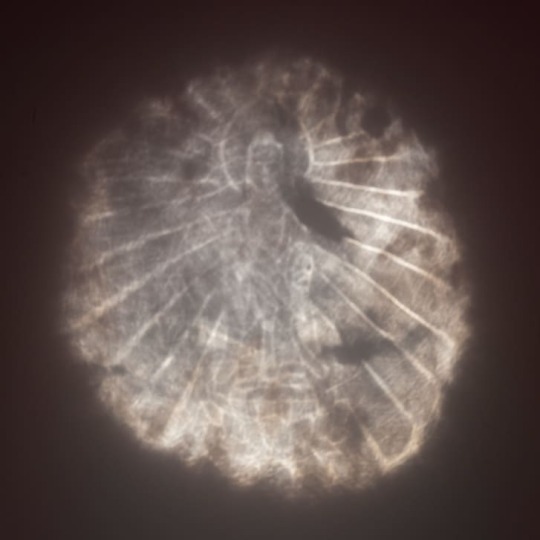


'Magic Mirror' Hidden Image Revealed in Reflection of Centuries-Old Artifact
Amid the thousands of treasures in the Cincinnati Art Museum's East Asian art collection, a small bronze mirror dating back to the 15th or 16th century always seemed rather unremarkable.
Last exhibited in 2017, it had spent much of the preceding decades in storage, where it sat on a backroom shelf alongside other objects excluded from public display.
But the artifact had a secret hiding in plain sight.
While researching so-called "magic mirrors" -- rare ancient mirrors that, in certain light, reveal images or patterns hidden on their reflective surfaces -- the museum's curator of East Asian art, Hou-mei Sung, saw something resembling the examples from Edo-period Japan.
The item in storage in Cincinnati, Ohio, was smaller than the ones held in museums in Tokyo, Shanghai and New York City. It also featured a more complex style of Chinese script. Yet, Sung recalled there was something "very similar" about it.
So, last spring, she visited the museum's storage rooms accompanied by a conservation expert.
"I asked her to shine a strong, focused light on the mirror," Sung said on a video call from Cincinnati. "So, she used her cell phone (flashlight) and it worked."
On the wall before them was the appearance of texture in the reflected light -- not a distinct image, but enough to warrant further investigation. Following experiments using more powerful and focused lights, the mirror eventually revealed the image of a Buddha, rays of light emanating from his seated form. The inscription on the mirror's back spells out who was depicted: Amitabha, an important figure in various schools of East Asian Buddhism.
The discovery makes the museum one of only a handful of institutions in the world to own a magic mirror, according to Sung. The curator is only aware of three others in possession of rare Buddhist-themed ones, including the Metropolitan Museum of Art in New York.
"We were so excited," Sung said.
Ongoing mystery
Before the invention of today's glass mirrors, people from cultures around the world gazed into polished bronze, from ancient Egypt to the Indus Valley. The ancient art of Chinese magic mirrors was first developed during the Han dynasty, around 2,000 years ago, though they were also later made in Japan.
To create the mysterious effect, artisans began by casting images, words or patterns onto one side of a bronze plate. Scientists believe they then scratched and scraped the plain surface on the other side, before polishing it until it became reflective like a conventional mirror. Because the plate was of varying thickness, due to the embossed design, the process created very slight changes in curvature on the seemingly blank mirrored side. A mercury-based substance was then used to make additional surface stresses that were invisible to the naked eye but matched the elaborate patterns on the back, according to an article in the UNESCO Courier journal.
When sunlight hits the reflective surface in a certain way, a hidden image -- matching the design on the back -- would be revealed, giving the illusion that light was passing right through the mirror. For this reason, they are known in Chinese as "transparent" or "light-penetration" mirrors. (In the case of the Cincinnati Art Museum's discovery, however, a second metal plate was likely soldered onto the back, leaving the original embossed Buddha concealed inside.)
The mirrors baffled Western scientists who encountered them in the 19th century. And while their optics are now broadly understood, Sung said experts still don't know precisely how craftspeople worked the metal.
"No matter how much you can explain theoretically, it all depends on the master who polishes the surface which is tremendously difficult," she said. "That's why they are so rare."
Measuring about 8.5 inches in diameter, the museum's mirror was likely used as a religious ornament and may have hung in a temple or noble household. The museum is yet to decipher whether it originated in China or Japan, though Sung believes it is most likely the former.
The item was first recorded in the museum's Asian art collection in 1961, though the curator thinks it may have been acquired long before then. She also suspects that other institutions and collectors are in possession of magic mirrors without realizing.
"I found a lot in online auctions that have a similar design to ours, but (the auction listings) never say they're magic mirrors," she said, adding: "I believe there could be some mirrors out there that people don't even know are magic."
The mirror will be on display at the Cincinnati Art Museum from July 23.
By Oscar Holland.
#'Magic Mirror' Hidden Image Revealed in Reflection of Centuries-Old Artifact#bronze mirror#archeology#archeolgst#ancient artifacts#history#history news#ancient history#ancient culture#ancient civilizations
33 notes
·
View notes
Photo

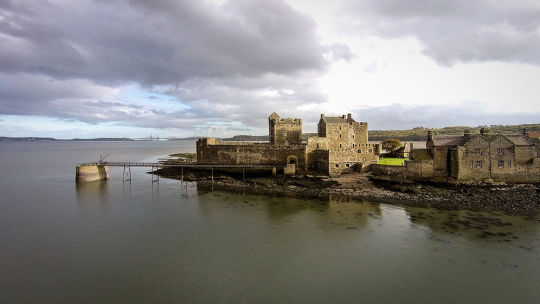
Blackness Castle is a 15th-century fortress, near the village of Blackness, Scotland, on the south shore of the Firth of Forth.
It was built, probably on the site of an earlier fort, by Sir George Crichton in the 1440s. At this time, Blackness was the main port serving the Royal Burgh of Linlithgow, one of the main residences of the Scottish monarch. The castle, together with the Crichton lands, passed to James II of Scotland in 1453, and the castle has been crown property ever since. It served as a state prison, holding such prisoners as Cardinal Beaton and the 6th Earl of Angus.
Strengthened by Sir James Hamilton of Finnart in the mid-16th century, the castle became one of the most advanced artillery fortifications of its time in Scotland. A century later, these defences were not enough to prevent Blackness falling to Oliver Cromwell's army in 1650. Some years after the siege, the castle was repaired, and again served as a prison and a minor garrison. In 1693, the spur protecting the gate was heightened, and the Stern Tower shortened as a base for three heavy guns. Barracks and officers' quarters were added in the 1870s, when the castle was used as an ammunition depot, until 1912. The castle was briefly reused by the army during World War I. It is now a Scheduled Ancient Monument, in the care of Historic Environment Scotland.
Because of its site, jutting into the Forth, and its long, narrow shape, the castle has been characterised as "the ship that never sailed". The north and south towers are often named "stem" and "stern", with the central tower called the "main mast".
5 notes
·
View notes
Text
Black History Month Special
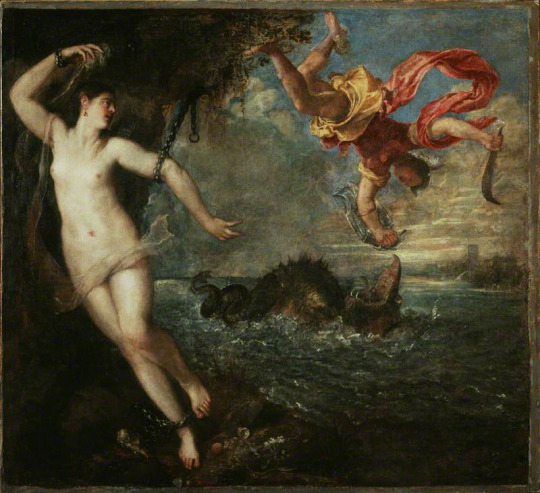
"Perseus and Andromeda"
Titian, circa 1554-1556.
Perhaps a better-known case of someone from Aethiopia, Andromeda makes for a good case study. The subject of a number of artworks (primarily paintings, f.e. see above by Titian), Andromeda's rescue by Perseus seems a favorite myth in the visual arts.
But when one puts these images side-by-side, it becomes abundantly clear that many artists favored a specific interpretation of Andromeda as someone with white skin.
A previous post went into the etymology of "Αἰθίοψ". It is explicitly mentioned that Andromeda hails from "Aithiopia". This is not to be confused with modern-day Ethiopia, and generally is a term that refers to the outer edges of the known Greek world. On the basis of that, the assumption could be made that Andromeda was black (African), brown (Indian/Persian), or perhaps mixed. But still, simply relying on Aithiopian would be in the realm of speculation.
Ovid, however, is a rare case in ancient texts where we encounter a visual descriptor of Andromeda's skin. Even rarer, he does this multiple times.
Ovid is particularly known for Metamorphoses, where Andromeda is introduced with the following note:
"nisi quod levis aura capillos moverat et tepido manabant lumina fletu, marmoreum ratus esset opus" (book 4, lines 673-675)
Artists that read the Metamorphoses and are accustomed to the white marble pillars and temples, would come to the conclusion that Andromeda was as pale as can be.
But Ars Amatoria, a lesser-known work by Ovid (probably due to it being censored for its erotic topics, as recent as 1930s US), is more direct on Andromeda:
"Alba decent fuscas: albis, Cepheï, placebas" (book 3, line 191)
"Nec suus Andromedae color est obiectus ab illo" (book 2, line 643)
Interestingly enough, though the latter comment could suggest a negative undertone in regard to color, Ovid is quite positive in regard to darker-skinned people or at least felt the need to include them in this text.
Among the tons of white Andromedas, there are still some that strive for a little further reading of Ovid.
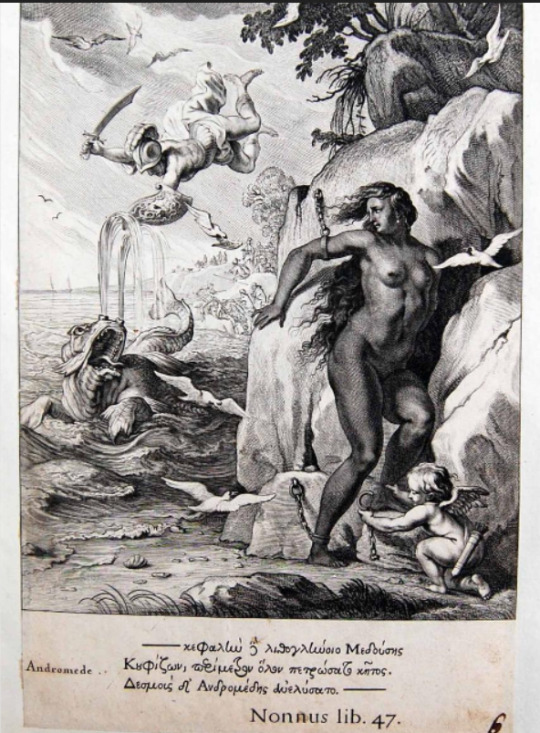
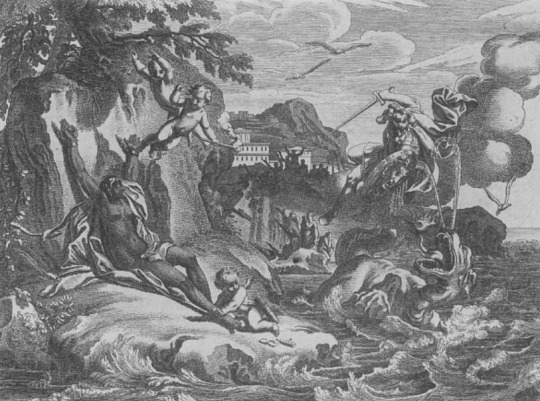
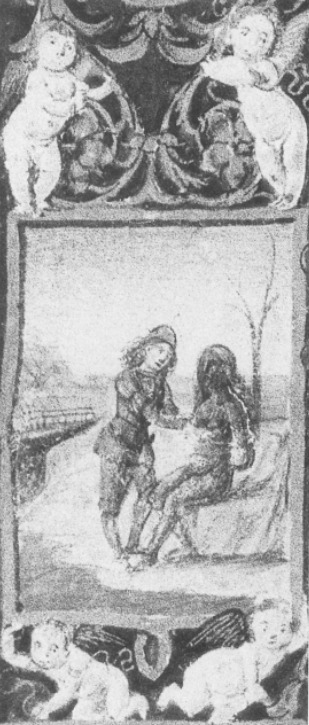
From left to right: A. van Diepenbeeck, 1655 ; J.J. von Sandrart, 1698 ; Unknown, 15th century
Recommended reading:
Yaker Ekall, Patricia. "Andromeda: forgotten woman of Greek Mythology." Art UK. 17 August 2021. https://artuk.org/discover/stories/andromeda-forgotten-woman-of-greek-mythology
(mentioned in the above)
McGrath, Elizabeth. “The Black Andromeda.” Journal of the Warburg and Courtauld Institutes 55 (1992): 1–18. https://doi.org/10.2307/751417.
#ancient greece#ancient rome#ovid#andromeda#mythology#fables#black history month#black history#visual art
4 notes
·
View notes
Text
Honestly if you really think about it, some of the poptropica villains we’ve encountered would probably be dead today. That’s because they live on islands that are set in different time periods. So I’m gonna go over which villains would be the oldest chronologically.
I’m not going to include Zeus cause while he does live in Ancient Greece, he’s a literal god and doesn’t really quite count.
First is Scheherazade and Samhal surprisingly, you’d think that it would be Bard who is the oldest villain chronologically but he actually isn’t. Arabian Nights is based off of 1001 Arabian nights, and according to the story, it takes place in the Sasanid Dynasty. This means that Arabian nights would have taken place between 224 to 651 CE/AD.
And then next is Binary Bard. Astro knights takes place in the medieval era obviously, but lets pinpoint when exactly. The first known accounts of knights existing are written in the 8th century and knights were considered obsolete by the 15th century. Obviously there weren’t any highly advanced technology in the medieval era but hey it’s fictional.
This one was a little hard to pinpoint because the fairytales used in this have rather broad eras in which they take place, but to simplify things I’ll be going by the Disney/popular versions. There are a total of 5 major characters who are actual fairy tale characters, but lets start with the princesses first. Snow White is from the 16th century and Cinder is from the 19th century. Now let’s talk about the characters who didn’t show up in any Disney movies. The origins of “The little red riding hood” trace back to the 10th century but the most commonly told version takes place in the 17th century. Our fairytale villain(at the moment) Rumpelstiltskin is most commonly associated with the 18th century, however it is believed that his story goes even farther back than that. The earliest known records of Rumpelstiltskin’s story are traced back about 4000 years ago and was traditionally told through generations by oral storytelling. However for simplicity sake, I’m placing Rumpelstiltskin below Scheherazade, Samhal, and Bard.
I didn’t want to bring up sponsored islands at first but I’m gonna do it anyways. Next is the shogun. The premise of Red Dragon island involves samurais and ninjas. Samurais were established in the 10th century and are commonly associated with the Edo period, which took place between 1603 to 1837. Ninjas were also around in the Edo period aswell.
Next is Captain Crawfish. Firstly, piracy has existed for a long time so we need to figure out how to narrow down what year he lived in. It’s safe to assume that he may have lived in the golden age of piracy, which takes place between 1650 to 1730. Now let me bring up something you probably never even thought about. If you go to Dragon Cove, you’ll see a wise woman there, the wise woman is wearing Qing dynasty clothes. The Qing dynasty lasted from 1636 to 1912, and fair enough, the golden age of piracy sits well in between that era.
Next is Count Bram. Since he is based on Dracula, he would be living in the Victorian era, which takes place between 1837 to 1901
Around the same time frame is El Mustachio Grande. Obviously he would be living in the Wild West era, which lasted betwen the 1860s to the 1890s
Next is Mademoiselle Moreau. According to the wiki, Mystery train is based around the 1893 Chicago World’s fair and the train itself is based on the John Bull train that took people to the world fair.
Next is Ringmaster Raven. The island is stated to take place in 1956 and Raven was exiled from the town as a child in 1936. Believe it or not, he would actually still be alive today, albeit he would be very old, he would be roughly in his 90s at minimum.
Not gonna talk a whole lot about monkey wrench island but fun fact, Red Baroness is based on an actual German pilot from World war 1. Y’all can probably guess who I’m talking about.
Lastly is the villains of Ghost story island, Daphne Dreadnaught and the Magistrate. Henry Flatbottom became the Magistrate in 1929 and has been visiting Fiona’s grave for 50 years, meaning that Ghost story takes place in 1979. I’d say that Daphne too would still be alive, but Flatbottom? The man is like 10 minutes away from death, I doubt he would be still around.
From here on out, all the other villains are from the modern era, presumably past 24 carrot. I’d say about 9 out of all the villains we currently have would be dead in the present timeline if you don’t count Samhal who could still be a genie and Rumpelstiltskin who can be interpreted as being immortal cause y’know magic man. But it’s interesting that these villains being able to live in the modern era is possible thanks to the whole weird time travel thing that goes on when we visit different islands.
10 notes
·
View notes